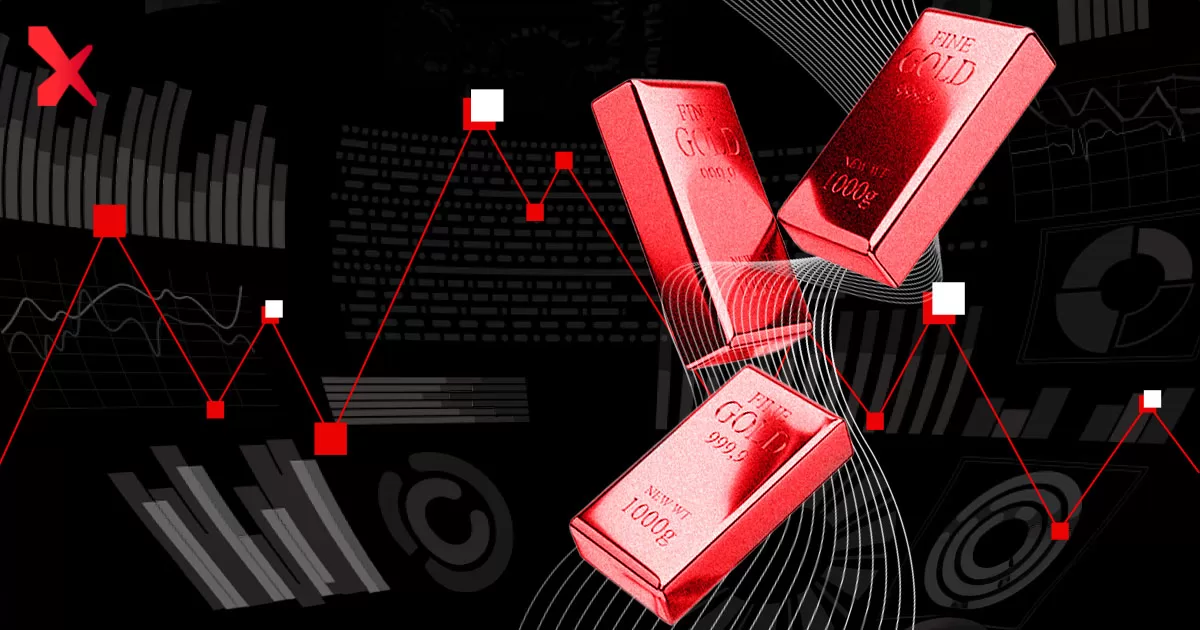Trading Signals 05/02 – 09/02
Gold: Year Start Overview and Outlook

Many analysts predict that the price of gold could rise by 20% to $2400 and beyond in 2024. Let’s take a close look at the factors that could influence gold’s price dynamics.
Gold Growth Factors
Several key factors can positively or negatively impact gold’s price trajectory in 2024.
Inflation Levels: Traditionally, gold prices have an inverse relationship with U.S. inflation levels. Lower inflation typically leads to reduced interest rates on government bonds, making non-interest-bearing assets like gold more attractive.
Seasonal Demand for Gold Jewelry: Gold jewelry, which accounts for 53% of physical gold, is a popular gift in countries like India and China, where demand spikes during certain seasons. This increased demand makes an already sought-after asset even scarcer, potentially driving up its price.
Central Banks’ Demand: Central banks have been buying gold at historic rates – acquiring 800 tons in the first nine months of 2023 alone. This has pushed global demand to 1150 tons, 8% higher than the average of the past five years.
De-Dollarization in Emerging Economies: Private and institutional investors view gold as an alternative for savings, as well as a hedge against inflation and currency risk. Demand for gold is rising as countries like Russia, China, and India seek ways to enhance their currency independence.
Geopolitical Climate: According to The Economist, elections are scheduled in 40 countries in 2024, covering over half of the global population. This massive electoral wave could have significant geopolitical repercussions.
Microeconomic Factors: Market sentiment for gold can be swayed by various economic news. For instance, gold retreated to $2015 per ounce on January 6th from $2076 on January 2nd. The trigger was a report indicating the U.S. economy added about 216,000 new jobs, surpassing forecasts by 46,000. Consequently, some investors shifted their focus away from the gold market.
However, news can sometimes lag behind price dynamics. This is because seasoned investors often anticipate information that later emerges in the media.
Price Forecast for 2024
In November 2023, reports from Reuters indicated that officials from the U.S. Federal Reserve considered the likelihood of a reduction in the yield of 10-year Treasury bonds down to 4.2470% in the upcoming months, attributed to the achievement of targeted inflation figures.
UBS, a Swiss financial conglomerate, predicts that the Fed’s rate cuts may commence as soon as March of the following year. Despite this, they don’t foresee these cuts averting a recession. The expectation is that the Fed will continue to lower the rate throughout 2024 until it reaches a level of 1.25% by early 2025. Deutsche Bank aligns with this rate reduction trajectory, though it projects the rate to bottom out at 2.25%.
As interest rates dip, gold tends to become more appealing. Consequently, the majority of analysts are projecting an increase in gold prices in 2024, with estimates ranging between $2200 and $2400 per troy ounce.
In terms of short-term investments, gold has the potential to be a more lucrative asset. For example, although gold prices saw fluctuations in 2022, the metal’s value at the start and end of the year was nearly identical – $1811 per ounce in January and $1814 per ounce in December. Notably, the gold price hit its highest at $2043 per ounce on March 8, 2022, and saw its lowest in September at $1626 per ounce. Investors who put their money into gold in the last quarter of 2022 could have realized annual returns exceeding 60%.
Over the first ten months of 2023, gold prices witnessed a 9.2% increase, surpassing the 1.4% growth of the S&P 500 index, which comprises stocks from the U.S.’s 500 largest public companies. Yet, similar to 2022, the year saw substantial price volatility. The year’s lowest gold price was recorded at $1811 per ounce on February 24th by the LBMA, and by April 13th, the price had surged to a peak of $2048. In the latter half of 2023, the lowest and highest gold prices were recorded on October 4th at $1819 and on December 4th at $2049, respectively. On December 4th, trading sessions saw gold prices climbing above $2107.
Conclusion
The price of gold is shaped by several pivotal factors: inflation in the US, the demand for gold jewelry in China and India, central bank acquisitions, the shift away from the dollar in various economies, microeconomic trends, and geopolitical shifts. Recessions and geopolitical dynamics fuel the demand for gold, influencing its market value.
Notably, central banks acquired 800 tons of gold in the market over nine months in 2023, contributing to a 10% increase in the metal’s price. Looking ahead, numerous analysts and economic institutions predict that in 2024, gold prices may ascend to the range of $2200-2400 per troy ounce, underscoring the multifaceted influences at play in the gold market.
Oil: A Review of Early 2024
China’s Economy: Early 2024
Simple Strategy for Beginner Traders

